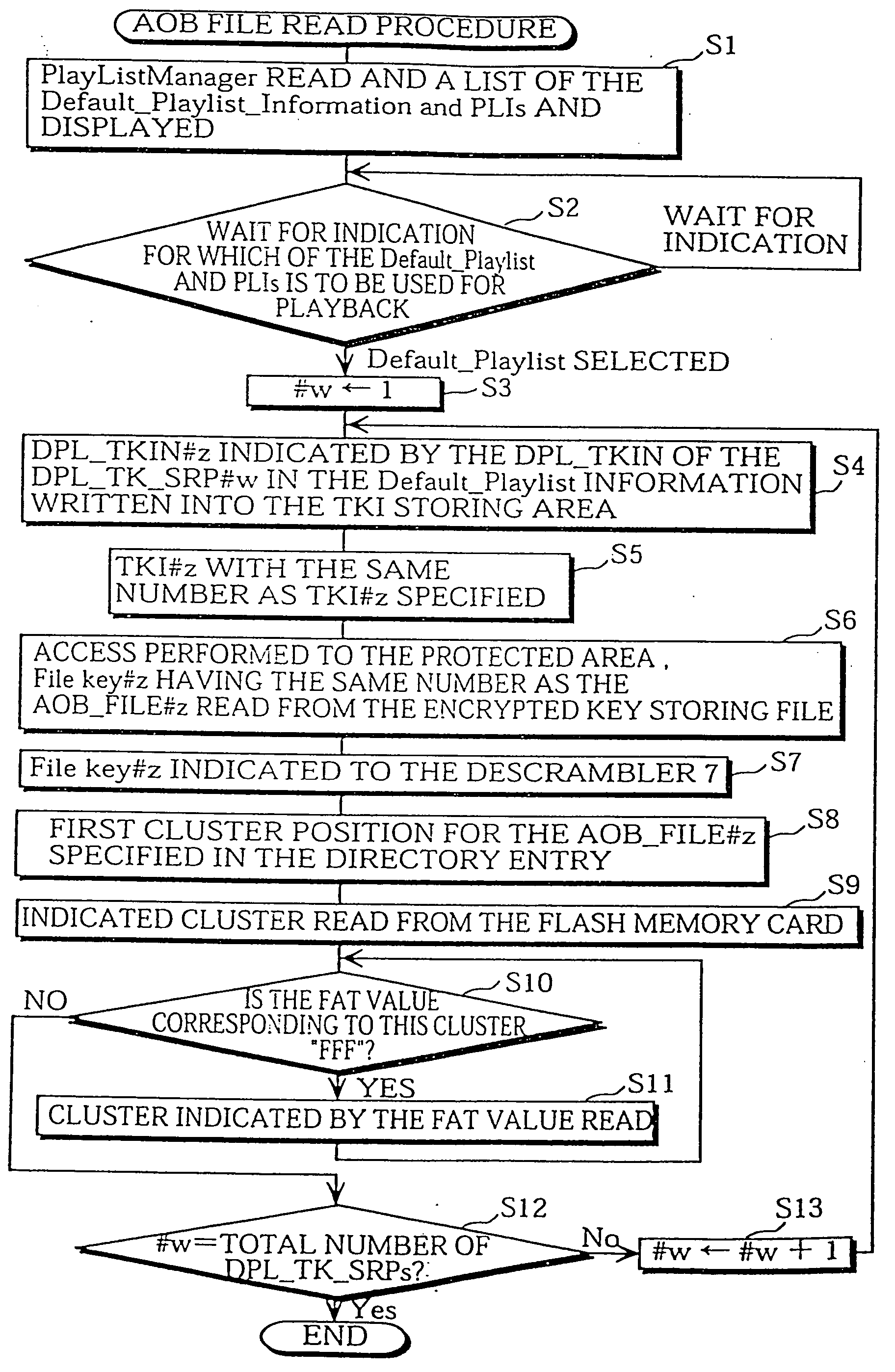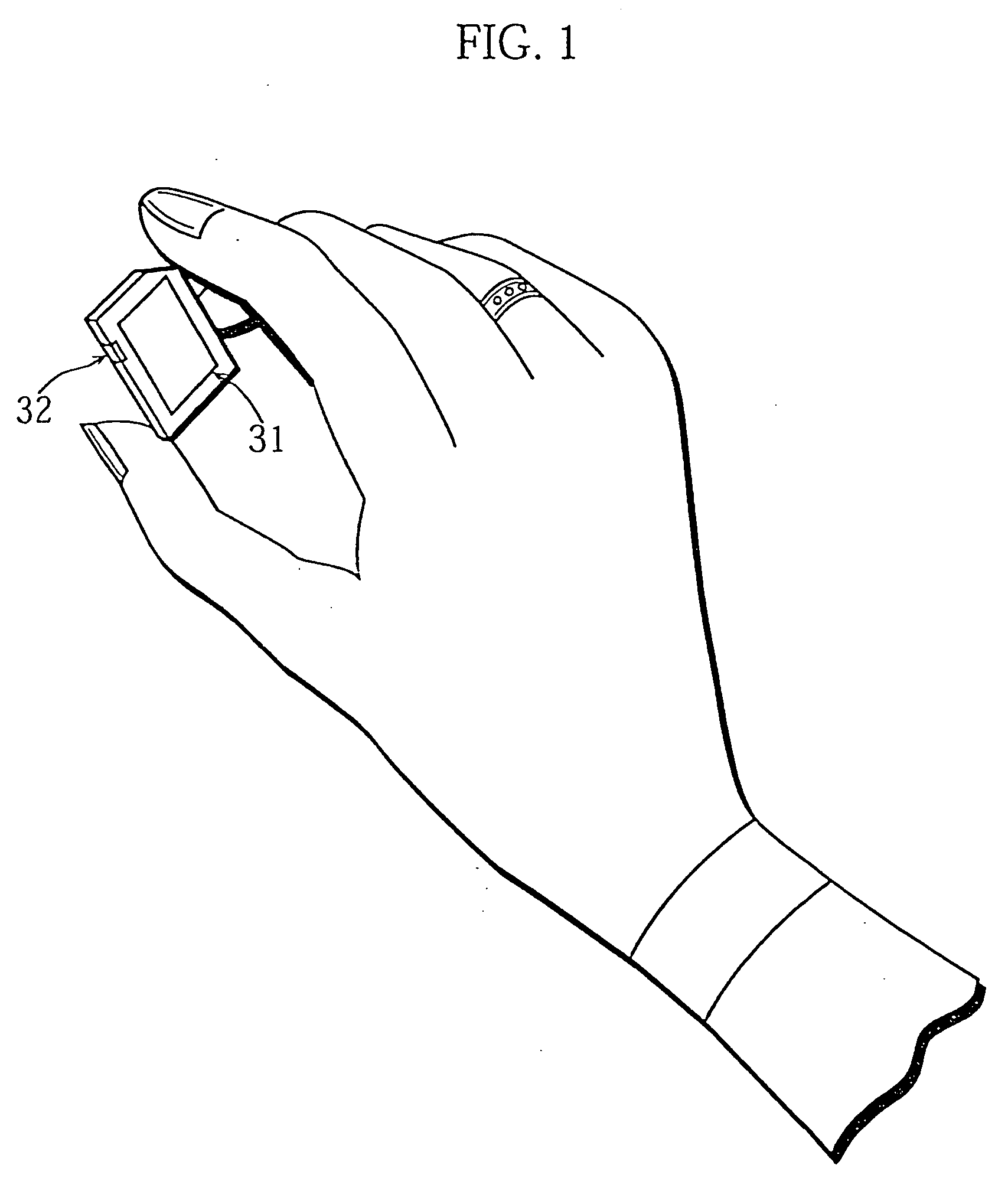Semiconductor memory card, playback apparatus, recording apparatus, playback method, recording method, and a computer-readable storage medium
a memory card and memory technology, applied in the field of memory cards, can solve the problems user will end up having to listen to tracks, and the effect of limited number of methods
- Summary
- Abstract
- Description
- Claims
- Application Information
AI Technical Summary
Benefits of technology
Problems solved by technology
Method used
Image
Examples
first embodiment
{1-1—2} External Appearance of the Flash Memory Card 31
[0125] The present explanation starts with the external appearance of the flash memory card 31. FIG. 1 shows the appearance of the flash memory card 31 when viewed from above, while FIG. 2 shows the construction of the flash memory card 31 when viewed from below. As shown in FIGS. 1 and 2, the flash memory card 31 is around the same size as a postage stamp, and so is large enough to be held by hand. Its approximate dimensions are 32.0 mm long, 24.0 mm wide, and 2.0 mm thick.
[0126] The flash memory card 31 can be seen to have nine connectors on its bottom edge for connecting the card to a compatible device and a protect switch 32 on one side to enable the user to set whether overwriting of the stored content of the flash memory card 31 is permitted or prohibited.
{3-1} Physical Construction of the Flash Memory Card 31
[0127]FIG. 3 shows the hierarchical structure of the semiconductor memory card (hereafter referred to as the “f...
second embodiment
{69-1} Overall Composition of the PlaylistManager in the Second Embodiment
[0534] This second embodiment relates to an improvement in the semiconductor memory card of the first embodiment that allows a playback apparatus to resume playback without repeating tracks that were previously played. FIG. 69 shows the internal composition of the PlaylistManager and TrackManager in this second embodiment. The PlaylistManager and TrackManager in this second embodiment differ from those shown in FIG. 17 in that the composition of the PlaylistManager_Information (PLMGI) is shown clearly in FIG. 69, unlike in FIG. 17.
[0535] Of particular importance in the PLMGI is the PLMG_RSM_PL. This shows the playback resume position, and is stored on the semiconductor memory card to enable a playback apparatus to resume playback of the content without repeatedly playing back the same data.
{70-1} Detailed Composition of the PlaylistManager Information
[0536]FIG. 70 shows the detailed composition of the Pl...
third embodiment
{74-1} DPLI_RSM_PL, PLI_RSM_PL
[0591] In this third embodiment, the DPLI and each PLI are each provided with their own playback resume information, DPLI_RSM_PL or PLI_RSM_PL, to show at what point the previous playback of that playlist ended. FIG. 74 shows the Default_Playlist_Information that has a DPLI_RSM_PL in the DPLGI and a PLI that has a PLI_RSM_PL in the PLGI.
[0592] The DPLI_RSM_PL (PLI_RSM_PL) only include a Track_Number and Playback_Time, and so differs from the PLMG_RSM_PL in that a Playlist_Number is unnecessary. As another difference, when all of the tracks in the playback order indicated by the DPLI or a PLI have been completely played back, the value “FF” is set in the Track_Number in the DPLI_RSM_PL (PLI_RSM_PL) to show that the playlist was completely played back.
[0593] The following describes the playback apparatus of the third embodiment.
[0594] When the playback of the tracks specified in the playback order of a PLI is stopped midway, the playback apparatus wr...
PUM
| Property | Measurement | Unit |
|---|---|---|
| frequencies | aaaaa | aaaaa |
| frequencies | aaaaa | aaaaa |
| frequencies | aaaaa | aaaaa |
Abstract
Description
Claims
Application Information
 Login to View More
Login to View More - R&D
- Intellectual Property
- Life Sciences
- Materials
- Tech Scout
- Unparalleled Data Quality
- Higher Quality Content
- 60% Fewer Hallucinations
Browse by: Latest US Patents, China's latest patents, Technical Efficacy Thesaurus, Application Domain, Technology Topic, Popular Technical Reports.
© 2025 PatSnap. All rights reserved.Legal|Privacy policy|Modern Slavery Act Transparency Statement|Sitemap|About US| Contact US: help@patsnap.com



